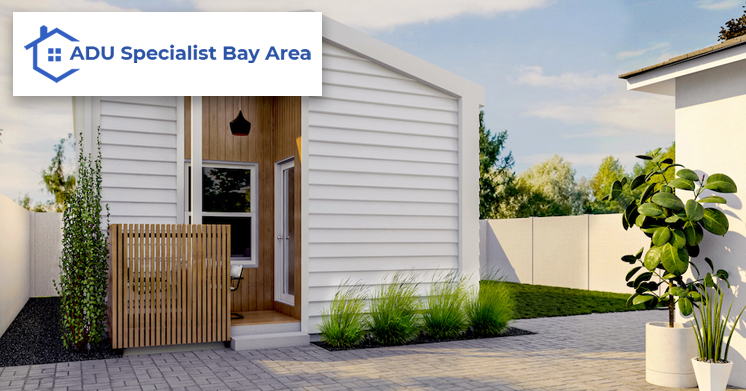- Call Free: 877-937-7970
As a homeowner, you need to learn and find out ways for maximizing your Stand-Alone or Detached ADU. Yes, 1200 square feet to be precise. This is the maximum limit. This is exactly how big you can build your detached ADU in the Bay Area, or for that matter in any other city of California. In this size, you can get to or more bedrooms, two baths, a kitchen, a laundry and extra living space. Ask us how to maximize the space, yet keep everything in limits, and our experts in ADU garage conversion are there to help you out with the design and construction work. Let’s understand, what exactly is a detached Secondary Dwelling Unit and how it is built with the help of a certified & licensed contractor like us.

First, an assessment is conducted on your property, where the detached ADU is to be built. As a professional general contractor and home remodeler, we inspect the utility connections and drainage system, before drawing the design-plan. Once the final design-plan is ready, it needs to be submitted to the concerned local issuing authorities for approval. You also need to obtain a government or municipal permit for building one such backyard cottage or stand-alone unit. The size, floor plan and dimension of the ADU is finalized and submitted, before any construction takes place. It takes around 60 days to get the ADU plans approved and obtain all the necessary permits from the local municipal authority. This is the basic preparation or ground work that you need to perform for your ADU to take shape.
Here is a table with the different stages of building a detached ADU, the time it takes for each, and what you need to do in each step. Please note that the exact time and steps may vary depending on your specific project and location.
| Stage | Time | Description | Actions |
| Planning | 2-4 weeks | Determine project feasibility and obtain necessary permits | Research local zoning regulations, hire an architect to design the ADU, obtain necessary permits |
| Site preparation | 2-4 weeks | Clear and grade the construction site | Clear the site of any debris, level the ground, and install any necessary utilities |
| Foundation | 2-4 weeks | Pour the foundation | Excavate the site, pour the foundation, and install drainage systems |
| Framing | 2-4 weeks | Build the frame of the ADU | Construct the frame, walls, and roof of the ADU |
| Exterior and Interior Finishing | 4-8 weeks | Install windows, doors, roofing, electrical, plumbing, insulation, and drywall | Install windows, doors, roofing, electrical, plumbing, insulation, and drywall |
| Painting and Flooring | 2-4 weeks | Paint the interior and exterior, and install flooring | Paint the interior and exterior of the ADU, and install flooring |
| Final Inspection | 1-2 weeks | Obtain final approval from the building inspector | Schedule a final inspection with the building inspector |
Before any new construction, all the necessary permits & approvals from the city municipality, county & state needs to be taken. A stamp of approval is mandatory to start work on any ADU construction project. The design-plan must be passed and approved by the local authorities, so that you may not land up into any kind of trouble in the future, and have to tear down some portions to suit and match the legal requirements of your municipality. Previously, the time taken to get an approval was 120 days, which has now been reduced to 60 days. Almost, half the time.

Since it is a stand-alone unit, it is totally separate from the main building. Backyard cottages or detached ADUs are built from ground-up, and thus require professional planning. The design-plan should be flawless, comply with the building codes and fully approved by the state. For constructing one such ‘stand-alone’ or detached unit, you need to pour a new foundation, build walls, ceilings, framework and other associated structures. An accessory dwelling unit built from scratch would cost more than converting a garage. What’s more, it is time-taking to obtain permits, since they are separate dwelling units, and require construction from the ground up. A majority of homeowners prefer building attached accessory dwelling units, as it saves money.. It is because a completely new unit would require construction of all these components, including the foundation, which can increase the overall budget.
California ADU construction laws have set the maximum size for detached ADUs at 1200 sq. ft. Well, the law does permit cities to put a few restrictions on the size of detached ADUs. But, the state law limits and controls the restrictions. For example, you are allowed to build a one-bedroom ADU of 850 sq. ft. as long as you’re not violating the development codes and norms. Secondly, you’re allowed to build an ADU with two or more bedrooms with at least 1000 sq.ft. in size. The best idea here, would be to stay within 750 sq. ft. and DO NOT pay any Impact Fee to the local authorities. This was not the case before 2020. So, it’s time to choose the construction materials and pour the foundation.
A detached ADU can easily be constructed with the help of experienced ADU contractors that are licensed and certified. Since they are larger than attached units, they fetch more price than any other types of ADUs. What’s more, a detached accessory dwelling unit can be placed anywhere on your property. You can choose a spot that offers privacy and follows the offset requirements of at least 4-5 ft. set by the local county or city. It should have its own driveway, plumbing fixtures and other utility connections, in this way, it is a self-sufficient, independent and stand-alone living unit or accommodation.
The regulations regarding the construction of ADUs vary depending on the specific city or county in the Bay Area. However, in general, many cities and counties in the Bay Area allow for the construction of two-story detached ADUs, as long as they meet certain requirements. These requirements may include minimum setbacks from property lines, maximum height restrictions, and design guidelines.
Submit a separate address application: Once you have obtained the necessary permits and checked the zoning regulations, you can submit an application for a separate address to your local planning department. The application will require specific information about your ADU, such as its square footage, number of bedrooms, and any other features.
Obtain necessary approvals: Your application will need to be reviewed and approved by various departments, including the building department, fire department, and local utilities.
Install necessary utilities: Once your application has been approved, you will need to install any necessary utilities, such as a separate water meter, sewer connection, and electrical service.
Obtain final approval: Once all of the necessary approvals have been obtained and the utilities have been installed, you can obtain final approval for your separate address.